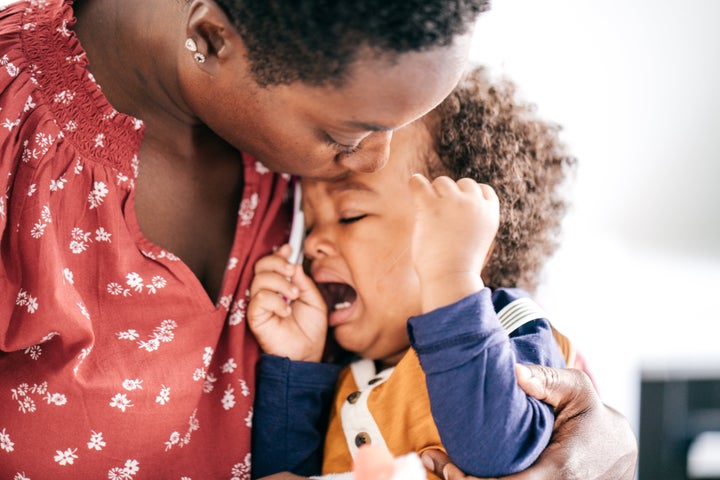It can help children and parents alike calm down during those inevitable “big feeling moments.”
Tantrums are a normal, if distressing, part of being and raising a toddler — more than half of young children will have one or more tantrums per week, according to the National Association of School Psychologists.
But knowing that doesn’t make these meltdowns any easier to deal with in the moment. Your kid is lying on the floor scream-crying, and you feel like you might start scream-crying at any second, too.
Tantrums are commonly triggered by hunger, tiredness, discomfort and frustration. They often show up in the second year of life, when kids’ language skills are beginning to develop but expressing their feelings — and managing them — is a struggle.
“Young children lack the physical, motor and language skills to get what they want, which can understandably lead to frustration,” journalist Paul L. Underwood wrote for The New York Times. “How would you feel if you wanted a spoon, but couldn’t reach the silverware drawer, and everyone thought you were saying ‘stool’?”
Little kids also want to exert their independence, which can lead to power struggles with parents and caregivers about clothes, meals, toys, bedtime and so much more.
“The beauty is that in that hard moment, a parent is showing presence, connection and modeling regulation.”– CASSIDY FREITAS, FAMILY THERAPIST
Experts advise parents to remain calm in the face of a tantrum. Your knee-jerk reaction, however, might not be so zen. Perhaps you have a habit of raising your voice or reprimanding your child for acting up, which only makes matters worse.
A surprisingly simple technique can help both you and your child come back down to baseline: singing them a song. The goal here isn’t so much about stopping the tantrum in its tracks as it is about soothing and connecting with your child during a tough moment.
“Singing has a regulating effect on the brain and body for both the singer and the listener,” San Diego family therapist Cassidy Freitas, host of the “Holding Space” podcast, told HuffPost. “Singing can help us regulate ourselves during these hard parenting moments, allowing us to model self-soothing to our child as well as access our communication and connection skills as we support them in feeling safe and seen in a hard moment.”

What you sing — or how well you sing — doesn’t matter, Freitas said. It can be a beloved song that already exists or one that you’ve made up for such occasions.
“The song can include words that help narrate what they are going through, name a feeling, elicit laughter, remind them of their goodness and create an opportunity for connection,” she said. “The beauty is that in that hard moment, a parent is showing presence, connection and modeling regulation.”
On her Instagram, Freitas posted a video that walks parents through this technique and shared the made-up song she uses with her own kids, especially her strong-willed middle child.
It goes like this: “I love you/ Love you/ All the parts about you/ Perseverance/ Determination/ You’re very goal-oriented.” (You can substitute your child’s challenging-yet-good qualities.)
Freitas said she finds singing to be most effective once her kids are ready for a hug. She’ll ask them if they are. If they say yes, she scoops them up in her arms and strokes or taps them as she sings, repeating the song a few times.
“These are parts of him that I don’t want him to dim, dull or feel ashamed of,” Freitas said in the video. “I’m still going to set a boundary. But I want him to know that I love these parts of him. And I hope that he begins to internalize that in these moments.”
Some kids, however, may need more time before they’re ready to be held during what Freitas calls these “big feeling moments.” Or perhaps they’d prefer not to be touched at all.
“With my oldest, I would give her some physical space (but stay close and present) and let her know I was there for a hug when she was ready while she let her feelings out,” Freitas wrote on Instagram.
Watch Freitas’ video above for more advice on how to implement this parenting tool so you’re prepared whenever the next “big feeling moment” arises.
Credit: Source link